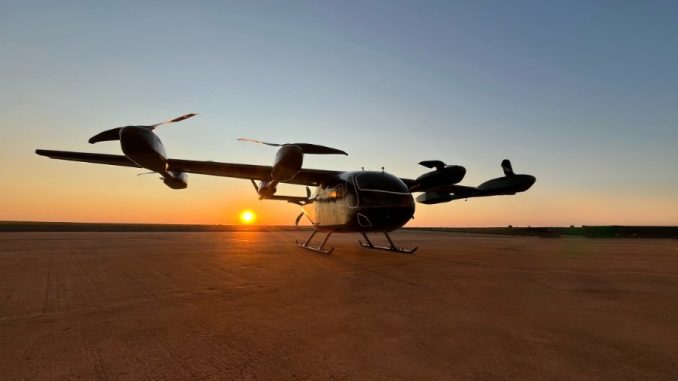
Eve Air Mobility has put on display at this year’s Farnborough Airshow the first full-scale eVTOL prototype being built in the Embraer test facility of Gaviao Peixoto, Sao Paulo State, Brazil.
According to Johann Bordais, CEO of Eve Air Mobility. “This is a significant milestone that underscores our commitment to safety, accessibility and innovation. As we now turn our attention toward the preparation of a rigorous testing campaign, we are not just creating an aircraft, we’re building a comprehensive ecosystem of solutions that will shape the future of the Advanced Air Mobility industry.”
In addition to the roll-out of its prototype, Eve also announced that it has completed the selection of the primary suppliers for its eVTOL aircraft. As Eve advances into the next phase of development, the eVTOL prototype already has a series of comprehensive testing campaigns. These campaigns are designed to assess every aspect of the aircraft’s operation and performance, from flight capabilities to safety features. These valuable insights will play an important role in refining the design and functionality of the aircraft. “This extensive testing phase begins the next fundamental step in our journey,” said Bordais. “It ensures that our eVTOL meets the high standards and expectations we’ve set for performance and safety.”
“Through its relationship with Embraer, the world’s third-largest aircraft manufacturer, Eve is able to take advantage of Embraer’s 55 years of experience developing, designing, certifying, and producing aircraft as it develops its eVTOL,” said the company in a press release. “Additionally, customers will benefit from having access to an existing global network of service and support locations, critical to ensuring reliable, safe, and efficient operations.
“With letters of intent for 2,900 eVTOLs, Eve’s aircraft utilizes eight dedicated propellers for vertical flight and fixed wings to fly in cruise, with no change in the position of these components during flight. The concept includes an electric pusher powered by dual electric motors that provide propulsion redundancy with the goal of ensuring the highest levels of performance, safety and dispatch reliability and low cost of operation.
For more information

